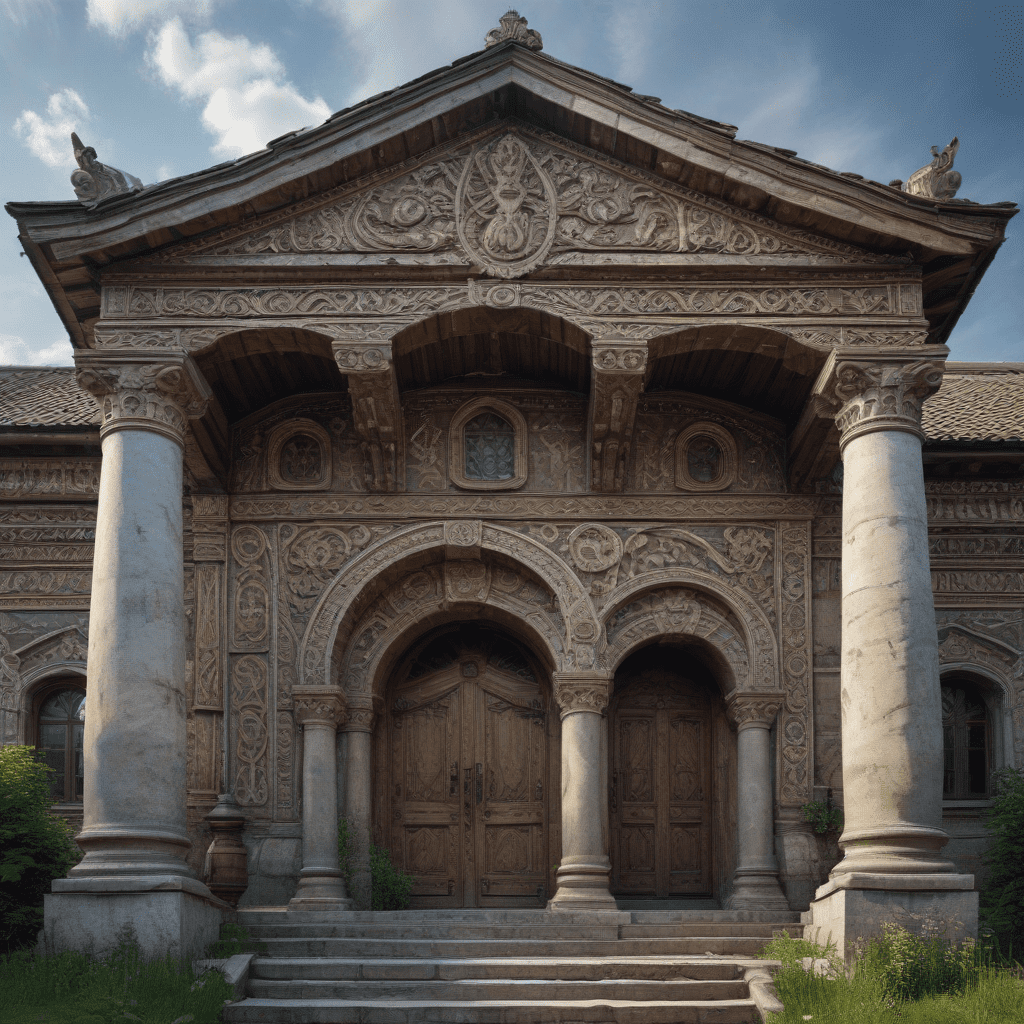The Influence of Slavic Mythology on Traditional Architecture
Introduction
Slavic mythology has deeply influenced traditional architecture in Slavic cultures. This influence can be seen in the design of homes, churches, and other buildings, as well as in the use of building materials and techniques. Slavic mythology is a rich and complex system of beliefs and practices that has developed over centuries. It is based on the idea that the world is populated by a variety of spirits and deities, who control the forces of nature and human affairs. Slavic mythology has had a profound impact on Slavic culture, including its architecture.
Slavic Mythology and its Origins
The origins of Slavic mythology can be traced back to the Proto-Slavic period, which began around the 6th century BC. The Proto-Slavs were a nomadic people who lived in Eastern Europe. They had a strong belief in the power of nature, and they worshipped a variety of gods and goddesses who controlled the forces of nature. Slavic mythology is thought to have been influenced by the mythologies of other cultures, including the Indo-European, Germanic, and Baltic cultures.
Slavic Myths and Legends
Slavic mythology is full of myths and legends that tell stories about the gods and goddesses, the creation of the world, and the lives of the Slavic people. One of the most famous Slavic myths is the story of Perun, the god of thunder and lightning. Perun is said to have created the world by striking the earth with his hammer. Another famous Slavic myth is the story of Baba Yaga, a witch who lives in a house on chicken legs. Baba Yaga is said to be able to grant wishes, but she is also known for her cruelty.
The House as a Microcosm of the Universe
In Slavic mythology, the house is seen as a microcosm of the universe. The house is divided into three parts: the upper world, the middle world, and the lower world. The upper world is the home of the gods and goddesses, the middle world is the home of humans, and the lower world is the home of the dead. The house is also seen as a sacred space, and it is often decorated with symbols of the gods and goddesses.
VI. The Role of Nature Spirits
Nature spirits play an important role in Slavic mythology. These spirits are said to inhabit all aspects of nature, including the land, the water, the forests, and the mountains. They are often depicted as being either benevolent or malevolent, and they can have a significant impact on the lives of humans. In traditional Slavic architecture, nature spirits are often represented through the use of carved figures, paintings, and other decorative elements.
VII. The Influence of Slavic Mythology on Building Materials
The choice of building materials in traditional Slavic architecture was often influenced by Slavic mythology. For example, wood was a popular building material because it was believed to be the home of the forest spirits. Stone was also a popular building material, as it was believed to be the home of the mountain spirits. Thatch was also a popular roofing material, as it was believed to be the home of the sky spirits.
VIII. The Influence of Slavic Mythology on Building Techniques
Slavic mythology also influenced the development of building techniques in traditional Slavic architecture. For example, the use of log cabins was a common building technique in Slavic cultures. Log cabins were believed to be strong and durable, and they were also thought to be resistant to evil spirits. The use of wooden pegs was also a common building technique in Slavic cultures. Wooden pegs were believed to be sacred, and they were thought to protect the home from evil spirits.
IX. Examples of Slavic Influences in Traditional Architecture
There are many examples of Slavic influences in traditional architecture. Some of the most notable examples include the wooden churches of Russia, the log cabins of Eastern Europe, and the thatched roofs of Central Europe. These buildings are all examples of how Slavic mythology has influenced the development of architecture in Slavic cultures.
X. Conclusion
Slavic mythology has had a profound impact on traditional Slavic architecture. This influence can be seen in the design of homes, churches, and other buildings, as well as in the use of building materials and techniques. Slavic mythology is a rich and complex system of beliefs and practices, and it has played a major role in shaping the culture of the Slavic peoples.
FAQ
Q: What is Slavic mythology?
A: Slavic mythology is a rich and complex system of beliefs and practices that has developed over centuries. It is based on the idea that the world is populated by a variety of spirits and deities, who control the forces of nature and human affairs. Slavic mythology has had a profound impact on Slavic culture, including its architecture.
Q: How has Slavic mythology influenced traditional Slavic architecture?
A: Slavic mythology has influenced traditional Slavic architecture in a number of ways. For example, the design of homes, churches, and other buildings has been influenced by Slavic myths and legends. The use of building materials and techniques has also been influenced by Slavic mythology.
Q: What are some examples of Slavic influences in traditional architecture?
A: Some of the most notable examples of Slavic influences in traditional architecture include the wooden churches of Russia, the log cabins of Eastern Europe, and the thatched roofs of Central Europe. These buildings are all examples of how Slavic mythology has influenced the development of architecture in Slavic cultures.


